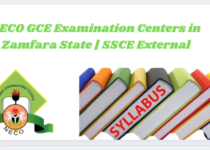Neco Biology Practical Specimen 2025/2026
Read this article’s full and recently approved Neco Biology Practical Specimen 2025/2026. Follow the provided link to download this year’s specimens, including the Neco Biology Practical Specimen. Stay updated with real questions and answers for all Biology practical exams during your examination by regularly refreshing this page.
Get free NECO Biology Practical Specimens Questions and Answers for 2025/2026. Check and download verified NECO Alternative to B Practical Expo/runs for SSCE online with a subscription Also, Read the latest likely Practical Biology NECO Questions and Answers.
Contents
- 1 NECO Biology Practical Specimen 2025/2026
- 2 Detailed NECO Biology Practical Specimen 2024
- 3 Specimen A – land Snail:
- 4 Specimen B: Toad
- 5 Specimen C – Spider
- 6 SPECIMEN D – CRAYFISH
- 7 SPECIMEN E SPIROGYRA FILAMENT
- 8 SPECIMEN F (MUCOR/RHIZOPUS)
- 9 SPECIMEN G (GROUNDNUT SEEDLING)
- 10 SPECIMEN H (MAIZE SEEDLING)
- 11 SPECIMEN I – MICROSCOPE
- 12 SPECIMEN L – AGAMA LIZARD
- 13 SPECIMEN N – TILAPIA
- 14 NECO Biology Practical FQ’S
NECO Biology Practical Specimen 2025/2026
Specimen A – Land Snail
Specimen B – Toad
Advertisements
Specimen C – Spider
Specimen D – Crayfish
Specimen E- Spirogyra Filaments
Specimen F – mucor/Rhizopus
Specimen G – Groundnut Seeding (A week old)
Specimen H – Maize Seedling (A week old)
Specimen I – Microscope
Specimen J – Slide (plain)
Specimen K – Pigeon
Specimen L – Agama Lizard
Specimen M – Rat
Specimen N – Tilapia.
Detailed NECO Biology Practical Specimen 2024
Specimen A – land Snail:
Specimen A, belongs to the Phylum Mollusca and Class Gastropoda, inhabits various environments such as shrub lands, agricultural areas, plantations, gardens, and wetlands. It adapts to its habitats through observable features such as:
- Lungs: Utilizes lungs to breathe in oxygen, facilitating adaptation to land habitats.
- Shells: Possesses shells for protection.
- Tentacles: Uses tentacles for vision and sensory perception.
Specimen A holds economic significance through various factors. It serves as a crucial food source for mammals, birds, and earthworms. However, its presence poses a threat to farmers, causing significant agricultural damage.
On a more positive note, Specimen A contributes to ecosystem balance by aiding in the decomposition of rotten vegetation, particularly leaves. The species primarily feeds through scraping, targeting leaves and insects. Furthermore, Specimen A is hermaphroditic, with larger-shelled individuals predominantly identified as females.
Specimen B: Toad
Specimen B, belonging to the class Amphibia, thrives in wet, moist, and damp environments, including under stones, damp grass, and vegetation near freshwater ponds. Adaptations to its habitat include.
- Poison gland for protection.
- Warty skin for camouflage.
- Webbed digits of hind limbs for swimming.
- Bulging eyes for good vision.
- Muscular forelimbs for shock absorption.
- Long muscular hind limbs for jumping/hopping.
- Cryptic coloration for camouflage.
- Moist skin for cutaneous respiration.
Specimen B, an amphibian with a habitat in wet environments, employs tongue projection for feeding, capturing prey with its long, sticky tongue. Its economic importance lies in various ecological roles:
Predator-Prey Dynamics: Regulates populations of insects and invertebrates, contributing to a balanced predator-prey relationship.
Nutrient Cycling: Contributes to nutrient cycling through the consumption of prey and release of waste.
Indicators of Environmental Health: Serves as an indicator species, reflecting the health of ecosystems and indicating changes in water quality and habitat conditions.
Seed Dispersal: Facilitates seed dispersal by consuming fruits or seeds and excreting them in different locations, aiding in plant colonization and genetic diversity.
Prey for Predators: Acts as a food source for various predators, influencing energy flow and trophic interactions within ecosystems.
Genetic Diversity: Contributes to overall genetic diversity, enabling adaptation to changing environmental conditions and promoting ecological resilience.
Specimen C – Spider
Specimen C, belonging to the class Arachnida, exhibits adaptability to diverse habitats:
Leg Structure: Tailored for precise movements, aiding in habitat navigation.
Spinnerets: Silk-producing appendages enable essential web-building activities.
Chelicerae and Fangs: Specialized for efficient prey capture and venom injection during hunting.
Body Size and Shape: Varied to suit habitat requirements, optimizing adaptation.
Eyes: Adapted for enhanced visual capabilities and prey detection, promoting survival in diverse environments.
Its habitats includes forests (temperate and tropical), grasslands, deserts, wetlands (marshes, swamps), caves, mountains, and shrublands (scrublands).
SPECIMEN D – CRAYFISH
Specimen D, classified under the Arthropoda class, thrives in freshwater habitats such as streams, rivers, lakes, and ponds, exhibiting key adaptations:
Claws and Appendages:
Large, powerful claws for defense and prey capture.
Walking legs with specialized structures for movement and stability.
Exoskeleton and Body Shape:
Protective exoskeleton for defense: Compressed body shape for maneuverability in narrow spaces.
Antennae and Sensory Organs: Long antennae with chemoreceptors for chemical detection.
Sensory setae for perceiving movements and vibrations.
Abdomen and Tail: Uropods and swimmerets for swimming and stability.
Tail fan and telson for propulsion and protection.
SPECIMEN E SPIROGYRA FILAMENT
Specimen E, Spirogyra, resides in freshwater environments like ponds and lakes. It belongs to the Protista kingdom and Chlorophyta phylum. Its reproduction includes sexual reproduction through conjugation and asexual reproduction by fragmentation. Unfortunately, I cannot provide a labelled diagram here, but you may easily find one in biology textbooks or online resources for Spirogyra.
SPECIMEN F (MUCOR/RHIZOPUS)
Specimen F, Mucor/Rhizopus, thrives in moist or humid environments, specifically on decaying food substrates like bread, jam, jellies, fruits, and vegetables. It belongs to the Zygomycota phylum and exhibits various modes of reproduction:
- Asexual Reproduction: Occurs through sporangiospores.
- Vegetative Reproduction: Achieved by fragmentation.
- Sexual Reproduction: Involves conjugation.
SPECIMEN G (GROUNDNUT SEEDLING)
Specimen G, known as Arachis hypogaea (groundnut), belongs to the Kingdom Plantae, Phylum Tracheophyta, and exhibits epigeal germination. This germination type is characterized by cotyledons emerging above the soil. Examples of seeds that share this germination type include mango, orange, tomato, bean, castor oil, crotalaria, cashew nut, date palm, and flamboyant.
The process of epigeal germination involves the testa splitting, radicle emergence, downward growth of the radicle, appearance of lateral roots, elongation of the hypocotyl, pulling the cotyledons above the ground, leaving the testa in the soil, the bent-over hypocotyl carrying closed cotyledons for plumule protection, straightening of the hypocotyl, cotyledon split/opening, emergence of foliage leaves, and the growth of the epicotyl showing the apical bud.
Specimen G is a dicotyledonous plant with reticulate leaf venation, a taproot system, and is classified as an annual crop due to its life cycle.
SPECIMEN H (MAIZE SEEDLING)
Specimen H, identified as Zea mays (corn), belongs to the Kingdom Plantae and Phylum Tracheophyta. It undergoes hypogeal germination, where the cotyledon remains below the soil. Specimen H is classified as a monocotyledonous plant, featuring parallel leaf venation and a fibrous root system. It is categorized as an annual crop due to its life cycle
or the germination of seeds, the following conditions are necessary:
- Viable seed
- Moisture/water
- Air/oxygen
- Warmth/suitable temperature
- Light/sunlight
SPECIMEN I – MICROSCOPE
To be successfully examined using brightfield microscopy, a specimen must meet two essential requirements: it should undergo “fixation” to preserve cells and elements in a life-like state, and it should be transparent rather than opaque, allowing light to pass through for optimal visibility.
SPECIMEN L – AGAMA LIZARD
Observable Differences Between Specimen B (Toad) and Specimen L Agama Lizard
Specimen L, identified as a member of the Reptilia class, primarily inhabits walls, cracks, and mountain slopes. Observable similarities between Specimen B (Toad) and Specimen L (Agama Lizard) include a wide terminal mouth, two pairs of four limbs (forelimb/hindlimb), tympanic membrane/eardrum, presence of a trunk, eyes, head, and nostrils.
The specimen L, identified as a male Agama Lizard, exhibits distinctive characteristics justifying its gender. These include its brightly colored appearance with a redhead, blue-black trunk, a blue and orange tail, the presence of a Gular fold, and a prominent Nuchal crest. These features align with typical male attributes of the species.
Specialized feeding strategies include a sit-and-wait approach, lightning-fast strikes, strong jaws for gripping prey, and swallowing prey whole. These adaptations collectively contribute to the Agama Lizard’s survival and feeding efficiency in its natural environment.
SPECIMEN N – TILAPIA
Habitat: Freshwater lakes, ponds, and rivers/ Marshes, swamps, and estuaries/ Coastal waters with varying salinity/ Aquaculture systems (fish
ponds, tanks, cages).
NECO Biology Practical FQ’S
specimen A – land Snail:
Specimen A, belongs to the Phylum Mollusca and Class Gastropoda, and inhabits various environments such as shrublands, agricultural areas, plantations, gardens, and wetlands. It adapts to its habitats through observable features such as:
Specimen A – Land Snail
Specimen B – Toad
Specimen C – Spider
Specimen D – Crayfish
Specimen E- Spirogyra Filaments
Specimen F – mucor/Rhizopus
Specimen G – Groundnut Seeding (A week old)
Specimen H – Maize Seedling (A week old)
Specimen I – Microscope
Specimen J – Slide (plain)
Specimen K – Pigeon
Specimen L – Agama Lizard
Specimen M – Rat
Specimen N – Tilapia
Prepare for your biology lab practical exam with these concise tips:
Review lab procedures and protocols.
Thoroughly go over lab data and results.
Learn key terms and concepts.
Practice techniques and procedures.
Familiarize yourself with lab equipment.
Specimen A – land Snail:
Specimen A belongs to the Phylum Mollusca and Class Gastropoda,
Specimen B: Toad
Specimen B, belonging to Amphibia class, thrives in wet, moist, and damp environments, including under stones, damp grass, and vegetation near freshwater ponds.


